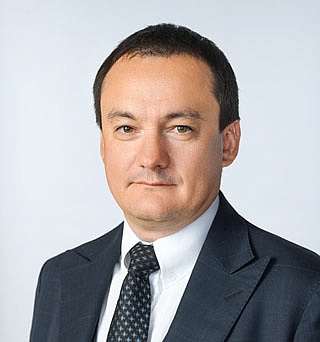How to increase efficiency of online brand protection efforts in Russia
16 January 2020This article first appeared in Online Brand Enforcement 2020, a supplement to WTR, published by Law Business Research. To view the guide in full, please go to www.WorldTrademarkReview.com.
According to the available statistics, counterfeit products account for more than 46% of the global market, significantly more than sales of heroin (7%), cocaine (8%), gambling games (14%), prostitution (18%) and other illegal businesses.
Russia’s e-commerce market has grown very quickly in recent years, with a predicted forecast of approximately $31 billion expected for the end of 2019. According to local research agencies, the following categories of goods are the most popular among online users:
- digital products: 31%;
- clothing and shoes: 23%;
- furniture and household appliances: 10.7%;
- food and beverages: 7.7%;
- auto spare parts and accessories: 6%;
- health and beauty: 4%;
- books: 2%;
- children’s products: 2%;
- sports goods: 1%; and
- other goods: 12%.
Can consumers be certain of product origin and quality online?
According to statistics, every third product purchased online is fake. Sellers can and do sometimes mislead potential customers about their products’ origin, resulting in sales of fake goods. However, people tend to buy fake products because of their lower price, creating a significant threat to brands that may damage reputation.
Brand owners may not be fully aware of the realistic market situation of a particular country and may therefore fail to evaluate potential or existing threats. In order to evaluate how significant a problem is in a country, both online and offline research are recommended.
Research
Online research covers the major online platforms (including marketplaces and social media) to reveal the number of unauthorised online sales, parallel imports and counterfeit goods. As Russia is a very specific market it is advisable to entrust such research to a local agent providing online monitoring services as they are the most familiar with the methods of revealing such information, taking into account language issues and local behaviour.
Offline research can shine a light on the geography of sales of counterfeit products across the country. However, the task may appear daunting given the size of the territory of Russia. Nevertheless, the research should certainly cover Russia’s 15 major cities at least.
It may also prove advisable to connect with local distributors, since many will have information about unauthorised sales within their region and they may be a good source of obtaining relevant and reliable information without substantial costs for the brand owner.
During online research it is possible to collect information about the source of origin of a particular advertisement. For instance, it may be revealed that a website reproduced as a web landing page is generated by a ‘cost per action’ or ‘cost per acquisition’ (CPA) network. CPA is a marketing tool which allows the seller to pay for actions of users or potential consumers. This service provides low risks for sellers since they do not pay per click but for actual actions (eg, downloading an app or buying a product). There are three main parts to this online advertising model:
- seller;
- CPA network; and
- webmaster.
Each plays its own role: the seller places its product in the CPA network and pays for the confirmed lead, while the CPA network provides its platform for communication between the seller and webmaster, who in turn sets up the advertising (usually by designing a landing page) and arranges traffic to attract potential consumers. From a brand protection perspective, CPA networks are a huge threat since they can generate hundreds, even thousands, of identical web landing pages offering counterfeit or fraudulent products. It is not unusual for a consumer to be sent an empty parcel or a parcel containing another product of the same weight (eg, soap instead of boots) in an attempt to demonstrate to the postal service that the parcel has been dispatched, while making it difficult for the consumer to prove that the ordered product was never received.
Such online threats may be relieved by special online brand protection solutions that reveal the generated web landing pages as well as identifying the CPA network, improving the opportunity to eliminate the problem more efficiently than by mere regular monitoring. Online research may also reveal the structure of sales of counterfeit goods by identification and the comparison of contact details (eg, email addresses and telephone numbers), IP addresses and other sensitive information. This improves understanding of how the sales are structured and therefore assists in identifying the main target.
Online research may reveal the websites that have offline sales points (ie, physical shops) and the regions where such shops operate. It may even identify the location of a warehouse or supply source.
Fight against illegal online sales
Although Russian law provides efficient remedies against illegal online sales, there are many issues that must be considered.
First, according to the Personal Data Protection Law (152-FZ, 27 July 2006), if a domain name is registered in the name of a private person, his or her name and other personal information may be obtained only on request by the court, law enforcement authority (eg, police or public prosecutor) or attorney at law. The latter option is commonly used by law firms. According to the Law on Advocates’ Activity and the Bar in the Russian Federation (63-FZ, 31 May 2002) the right exists to request such information from the registrar, who must reply within 30 days. In practice, it takes about two weeks to obtain the required information.
Sellers of counterfeit products usually clearly understand that they are selling fakes and will be liable for IP rights infringement. Therefore, they rarely use original documents and often provide false information about themselves when registering a domain name. The registrars do not check this information at the registration stage. As such, a domain name owner may ignore takedown notices when it would be wise to request verification of the domain name owner’s personal data under the rules of the local domain name registrars and TLD coordination centre RU/РФ. The centre operates as the national registry and has the authority to develop domain name registration rules for ‘.ru’ and ‘.рф’, accredit registrars and research prospective projects related to the development of Russian TLDs. In case the owner of the domain name fails to produce the relevant documents (ie, a passport), the domain name registration will be cancelled by the registrar. This measure is quite efficient and allows for the elimination of the infringement quickly and without litigation, which can incur substantial costs.
Selling counterfeit goods online should be considered an offence that makes it possible to submit a complaint to the police or public prosecutor. According to the applicable legislation, the police may initiate an administrative case against the infringer based on the Code on Administrative Offences and forward the case to court for the final decision, where the infringer (ie, the domain name owner) may be fined. According to recent amendments to legislation, where distribution is prohibited, offering for sale counterfeit goods may be recognised as an act against public order, allowing the public prosecutor to block the website. This is quite a new approach, but is proving highly effective against illegal online sales.
Social media
During the past few years, online sales have expanded aggressively, as social media continues to provides the easiest way for sellers and consumers to communicate and allows sales to be conducted without substantive investment. Some global platforms such as Facebook and Instagram have developed special advertising tools to allow a product to be targeted at a particular group. Such social media platforms provide:
- a huge audience – globally, Facebook takes first place with more than 2.2 billion active users, followed by Instagram and WeChat;
- targeted consumer groups – anyone can place an advertisement, depending on the desired target group, based on age, gender, relationship status, territory and interests;
- easy access to product information;
- easy buying options; and
- minimum investment – there is no fee for creating an account, no rent or utility costs and no costs for a domain name or website design, as everything is done by the platform itself.
Counterfeiters continue to shift their efforts towards social networks, creating new threats for brand owners. Brand protection solutions are provided by a number of service providers, which deal with a huge number of infringements and send takedown notices to infringers, internet service providers (ISPs), website owners and marketplace and social media platforms. In many cases, such an approach provides good results, leading to detection and the removal of infringing content within reasonable time limits. Since information on social media networks can be distributed rapidly, it is vital that brand protection teams work 24 hours a day, seven days a week, to ensure that problems are escalated before they spread too widely.
In 2017 Facebook published a comprehensive transparency report on IP infringements displaying takedown request data. The report provides the following removal rates:
- notices submitted based on counterfeit products – 83%;
- notices submitted based on copyright infringement – 67%; and
- notices submitted based on trademark infringement – 49%.
Both brand owners and agents can report violations to Facebook and Instagram and the platforms will remove the infringing content. However, even if blocked, the user can still register a new profile with different contact details and continue to sell counterfeit goods.
There are a number of difficulties faced when trying to detect counterfeiters on certain platforms (eg, Facebook, Telegram and WeChat) where users can create and post infringing content in closed groups and that content is unavailable to non-members. One potential approach would be to monitor such groups and become a member to access the in-group information.
What should brand owners do if the platform denies the takedown request?
Where a takedown request has been denied, litigation may be one of the available options. In Russia, marketplaces, social media and peer-to-peer networks, among others, are considered to be ‘information intermediaries’ that can also be liable for IP infringement. ISPs cannot and should not remain on the outside of the infringement. According to the Civil Code, such service providers should also be considered information intermediaries, and, along with the other infringers, may be found liable for IP rights infringement, including piracy or trademark infringement, should guilt be established. There are three groups of intermediary:
- persons who transmit the data in the information and telecommunication network (eg, telecoms operators);
- persons who offer access to the placement of materials or information requisite to obtaining the same, using the information and telecommunication network (eg, hosting service providers); and
- persons who provide access to materials in the information and telecommunication network (eg, owners of websites and online platforms).
The law has also determined that the above persons can be exempt from liability under certain conditions. In particular, according to Article 1253.1 of the Civil Code, where the information intermediary can prove that:
- he or she has not initiated the transmission of materials or determined the recipient of the materials;
- he or she has not modified the materials in the process of their transmission, excluding where it is necessary as part of a technological process of transmitting information;
- he or she was not and should not have been aware of the fact that the use of the relevant content is illegal; and
- he or she performed all necessary actions to cease the infringement on receipt of a written notice from the rights holder containing URLs regarding the infringing content.
Claims regarding the removal of infringing content or restriction of access to such content may be raised against the information intermediaries irrespective of their guilt. However, statutory compensation for the infringement of IP rights may be claimed from guilty parties only.
The law attempts to ensure that ISPs cooperate with brand owners, often agreeing to restrict access to the infringing website on receipt of a takedown notice.
Comment
Online monitoring at a global level is no longer enough for the efficient protection of a brand in certain countries. It is advisable to use local teams to increase the effectiveness of brand-protection actions in line with the specifics of the country and its local laws.
To access this website, we request that you read and accept the Terms of Use.










